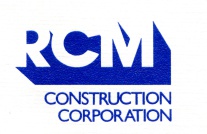Slab Crack Repairs
As does leak remediation, concrete slab crack repairs also takes many forms, all of which we address.
Leaks through cracks
A common occurrence is water infiltration through cracks in below-grade concrete slabs, often due to tidal fluctuations and sometimes due to intense, long duration rain and sometimes a combination of both.
These leak occurrences are conceptually easy to curtail. Our approach is to route the crack with a diamond blade to create a groove, fill the groove until refusal with an epoxy of appropriate viscosity, and then grind smooth the surface to avoid tripping hazards. The epoxy fills the cracks and almost always completely curtails the leak. On occasion, water infiltration finds an adjacent crack through which to infiltrate, in which case an extension of the original remedial effort solves the problem.
Spalling along crack lengths
Another crack problem, not necessarily associated with water infiltration, is the breaking away or spalling of small pieces of concrete along the two edges of the crack length. This situation is common in storage facilities where, over time, the tires of fork lift traffic used to stock shelving accelerates the spalling and creates a tripping hazard. While the the balance of the crack depth may be hairline, at the surface of the slab a wide furrow results.
The solution is similar to that where water infiltrates through a slab crack. The crack is routed with a diamond blade to create a groove, filled with epoxy until refusal, and then surface is ground smooth. The tripping hazard is eliminated.
RCM Construction has resolved many such problems in concrete slabs, including the slab of one of Honolulu’s largest ‘big box’ store that suffered thousands of lineal feet of crack edge spalling that resulted from the hard-rubber-tired forklifts restocked empty shelves during the night shift.



